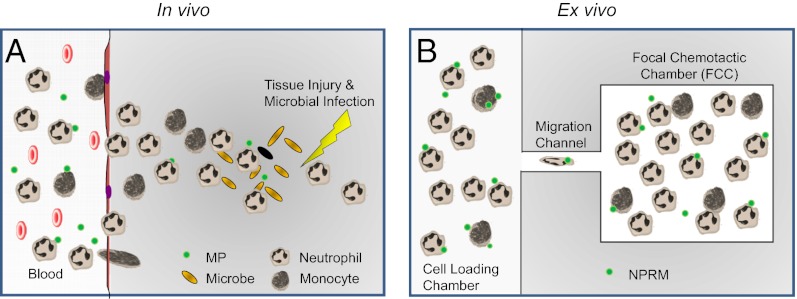Fig. 1.
Schematic of in vivo inflammation vs. in vitro microfluidic inflammation model. (A) After injury and microbial infection (orange grains), damaged tissue and bacteria produce gradients of chemoattractants that act as a compass for neutrophil and monocyte chemotaxis. MPs, which are neutrophil-derived, help to resolve inflammation. (B) Our device models inflammation and is primed with proinflammatory chemoattractants, and neutrophils and monocytes migrate and accumulate in the FCC, and their numbers can be accurately quantified. NPRMs are MPs supplemented with lipid mediators to augment proresolving activities.

